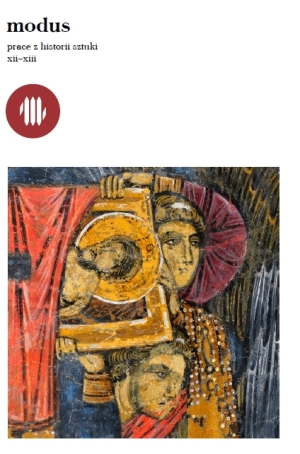U źródeł malarstwa pejzażowego. Krajobrazy w rzymskim malarstwie ściennym sprzed Sacco di Roma
At the Sources of Landscape Painting. Landscapes in Roman Wall Painting before Sacco di Roma
Author(s): Anna LebensztejnSubject(s): Fine Arts / Performing Arts, Visual Arts, History of Art
Published by: Wydawnictwo Uniwersytetu Jagiellońskiego
Keywords: Sacco di Roma;painting;Italian paintings;Italian art;
Summary/Abstract: The first harbingers of new attitudes towards landscape painting, those that were drawing on antiąue tradition and Flemish art and were supported by the authority of ancient writers, appeared in the Roman art of the first thirty years of the sixteenth century. The earliest examples of these new tendencies in landscape painting can be seen in the fresco Meeting ofLeo the Great and Attila in the Stanza d’Eliodoro in the Vatican Pałace, where the landscape in the background with the ruins of the Coliseum, an element typical of the Eternal City already anticipates the paesaggio allantica. Similarly, ancient buildings can be found in the background of the Vision of Constantine in the Sala di Costantino. In the slightly later frescoes on the vaulting of the so-called Raphaels Loggia in the Vatican, one can see inspirations drawn both from Northern art and from examples of ancient landscape painting, as well as actual views of the surroundings of Romę. At the same time, in Romę had originated two highly important examples of autonomous landscape paintings, namely, Baldassare Peruzzis decoration of the Salone delle Prospettive at Villa Farnesina and landscapes with the scenes from the lives of Saints Mary Magdalenę and Catherine by Polidoro da Caravaggio in the church of San Silvestro al Quirinale. The above works had outlined two main ąuestions which were of paramount importance for the subseąuent development of landscape painting: Peruzzi had created a model of painted, illusionistic architectural decoration, opening onto vast views, whereas Polidoro had introduced into the sacred space of the church monumental landscapes infused with the feeling of antiąuity, which anticipated the subseąuent ideał landscapes. In this way, a kind of model for the nascent landscape painting had been established, one introducing the type of allantica landscape and realistic views of cities, that would become highly popular in the decades to come and that paved a road for combining the painting traditions of the Italian Peninsula with the Flemish landscape painting.
Journal: Modus. Prace z historii sztuki
- Issue Year: 2013
- Issue No: 12-13
- Page Range: 73-92
- Page Count: 20
- Language: Polish

